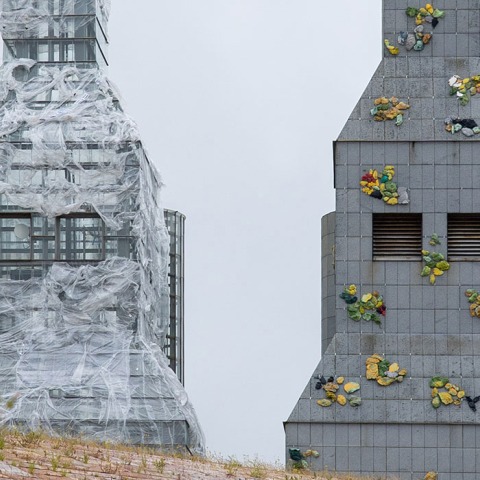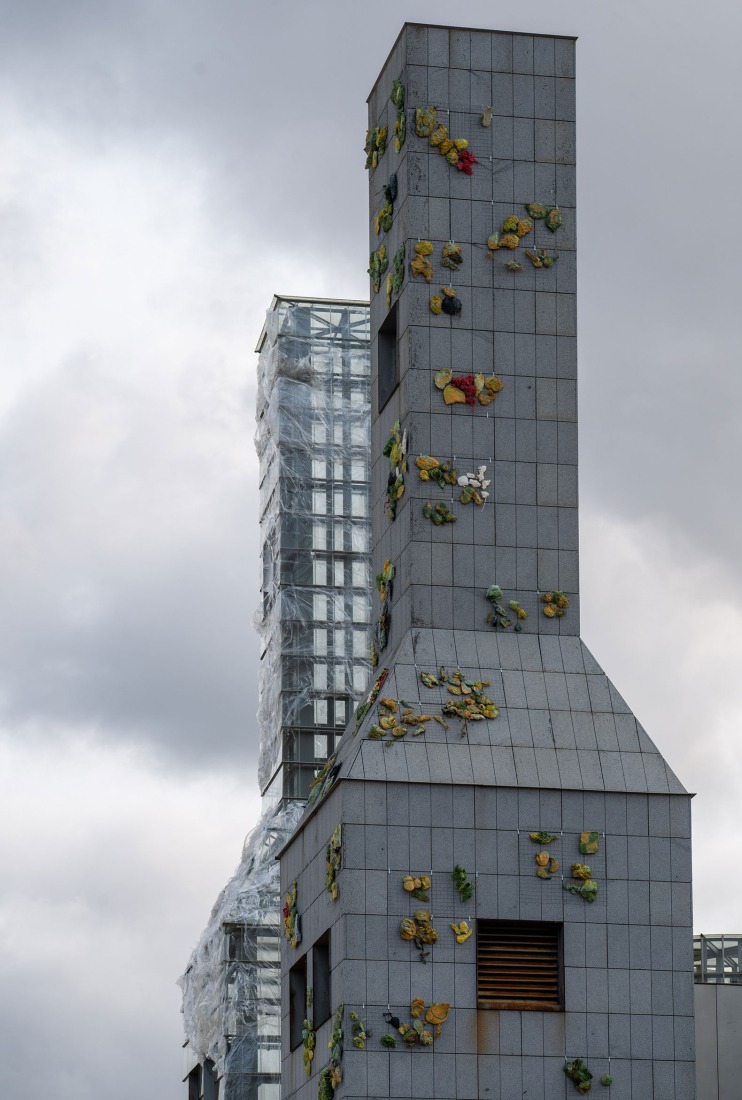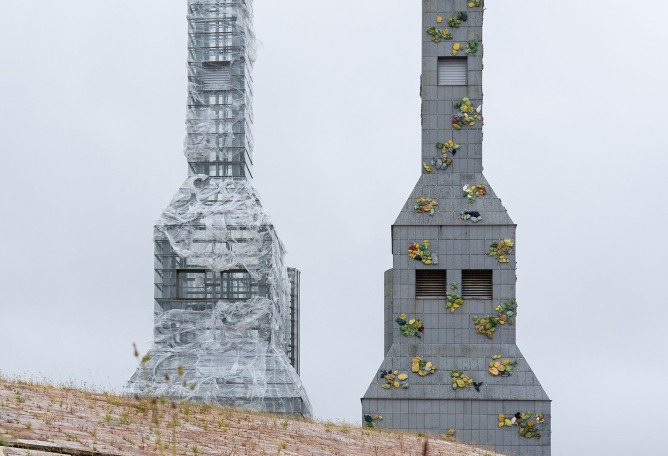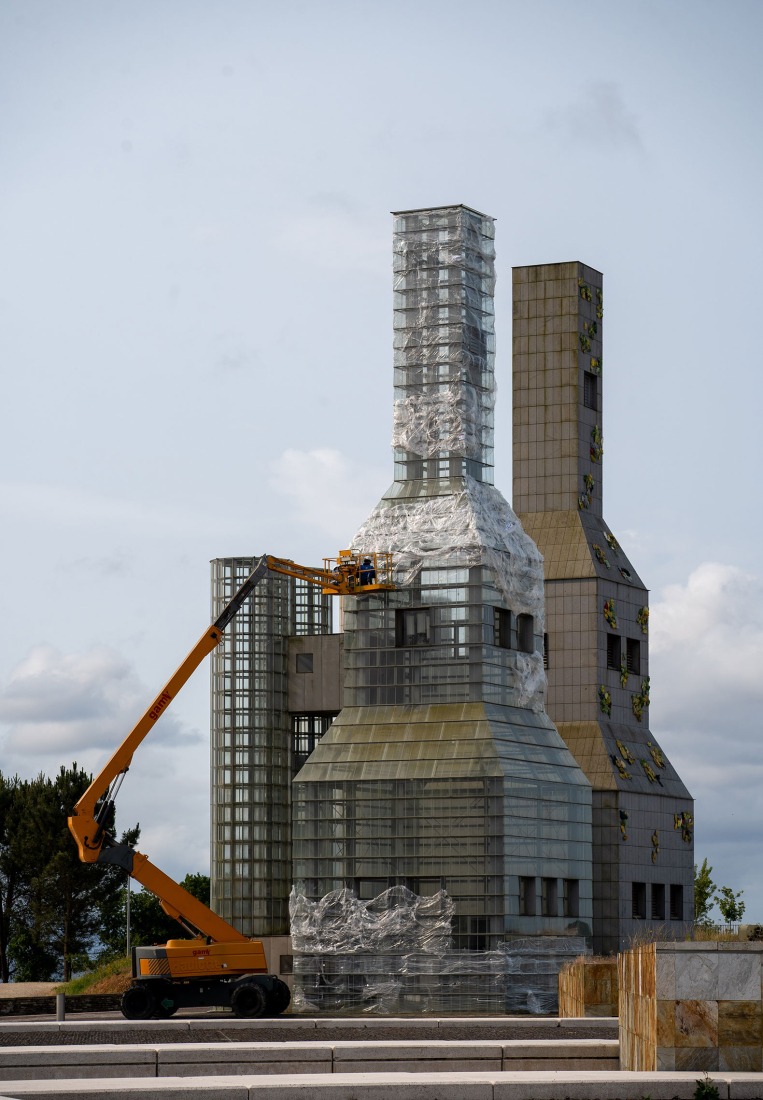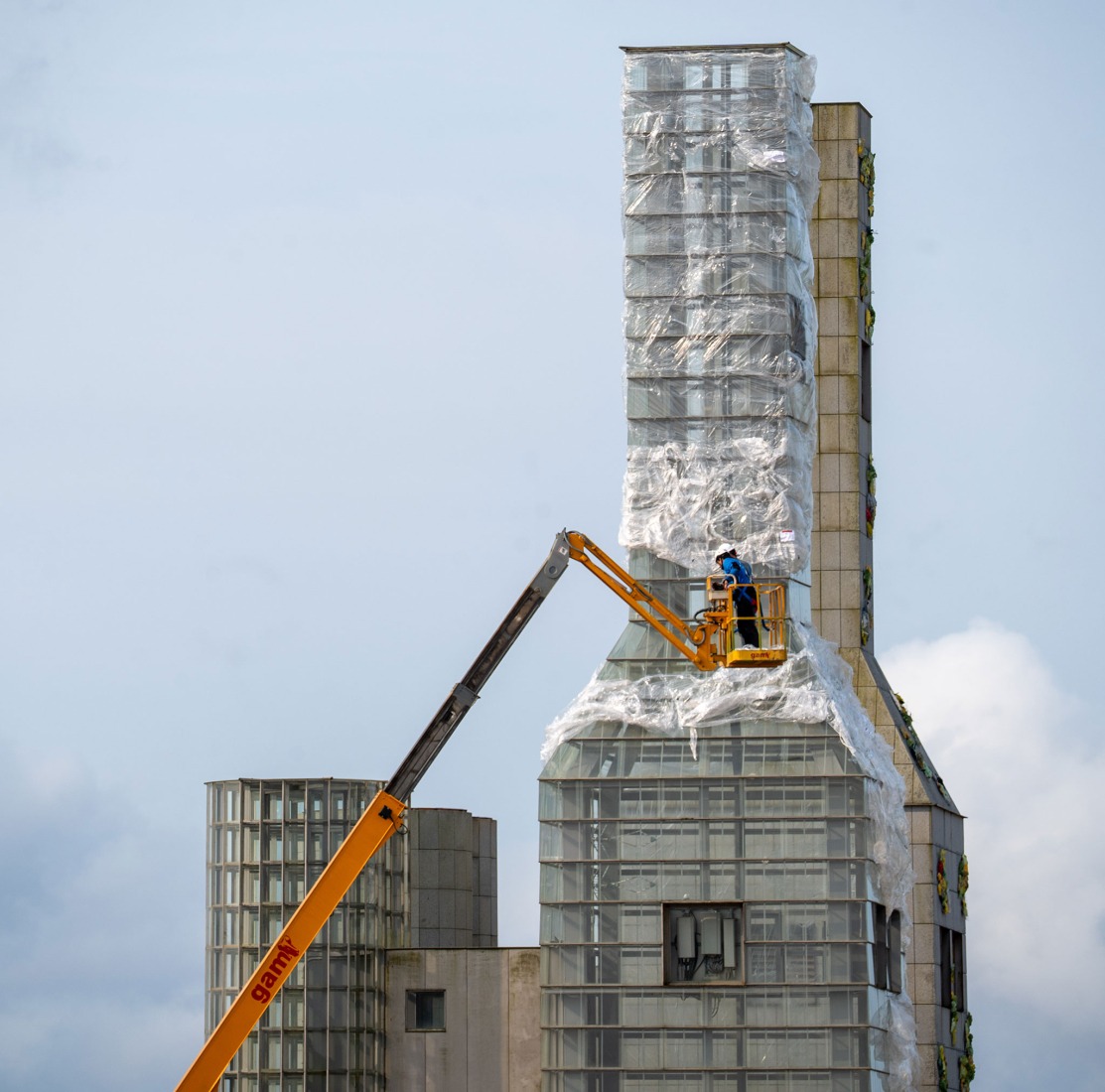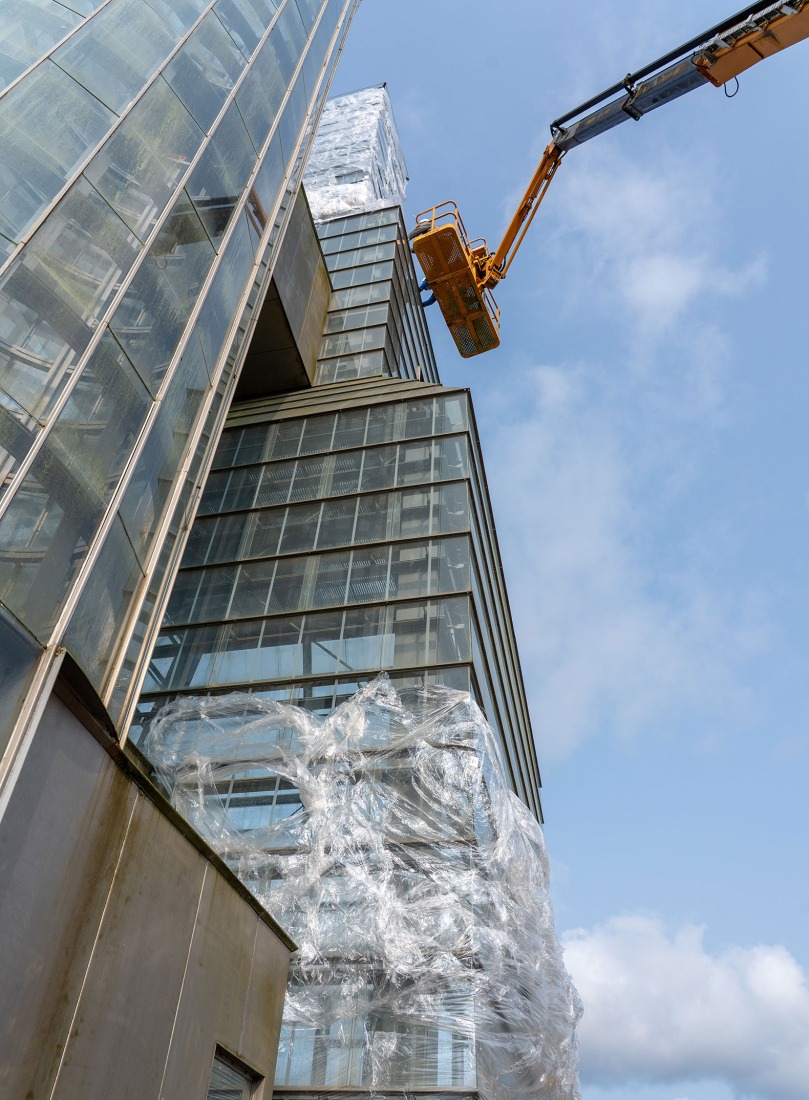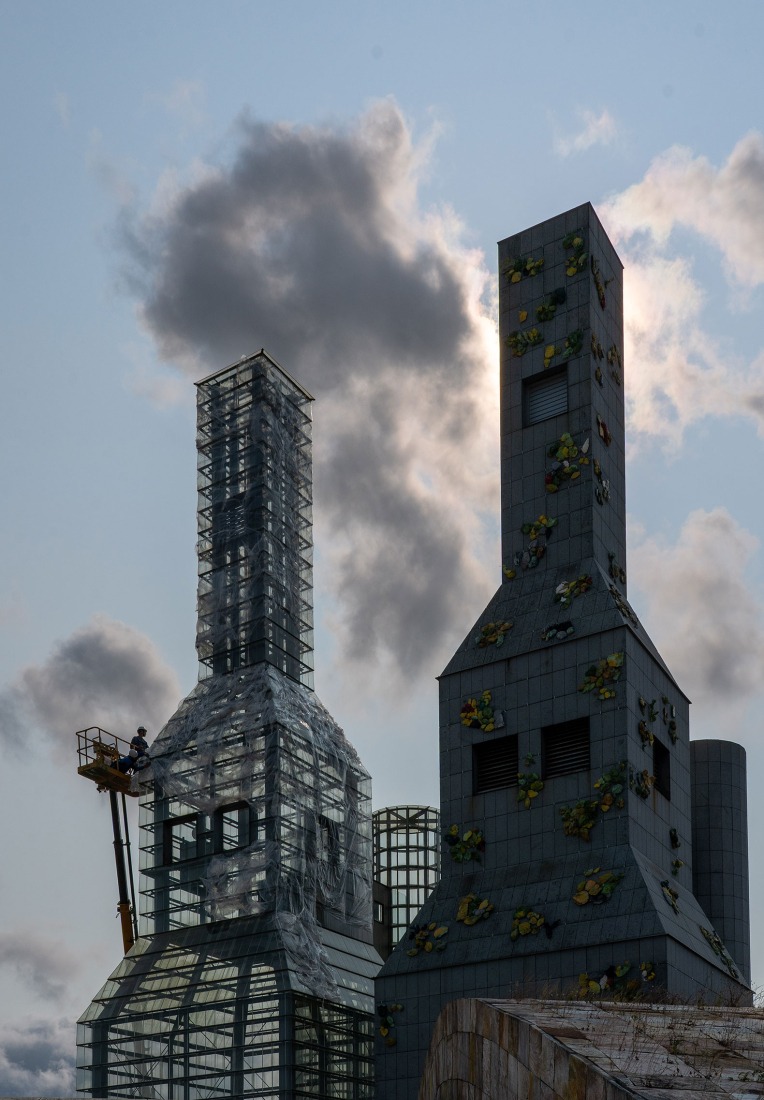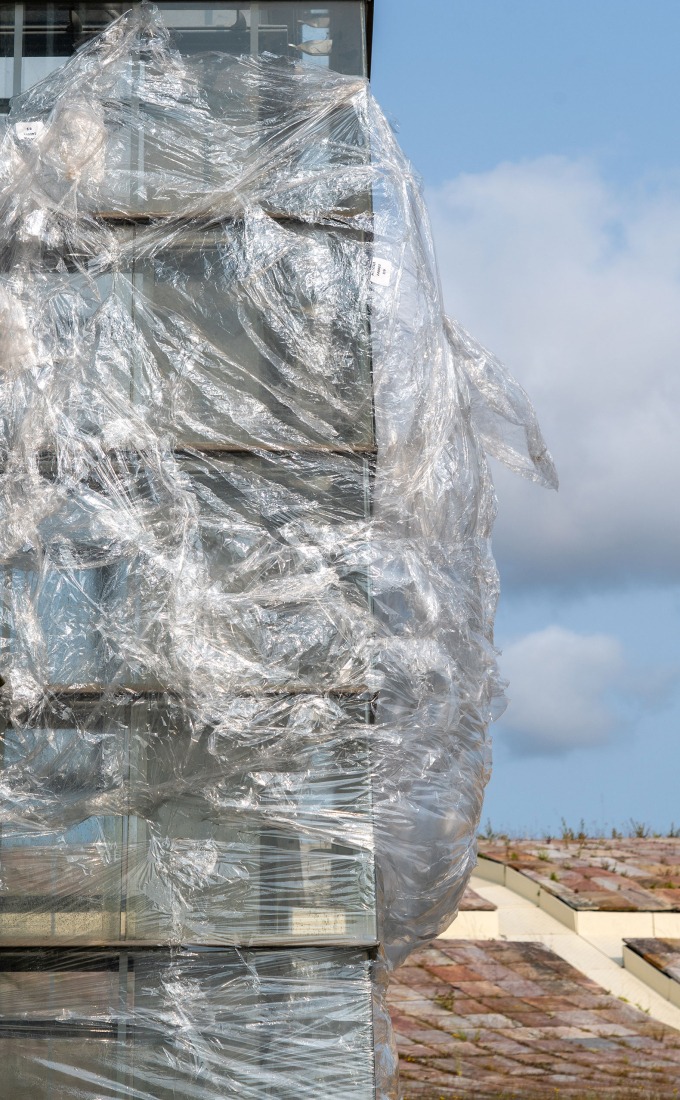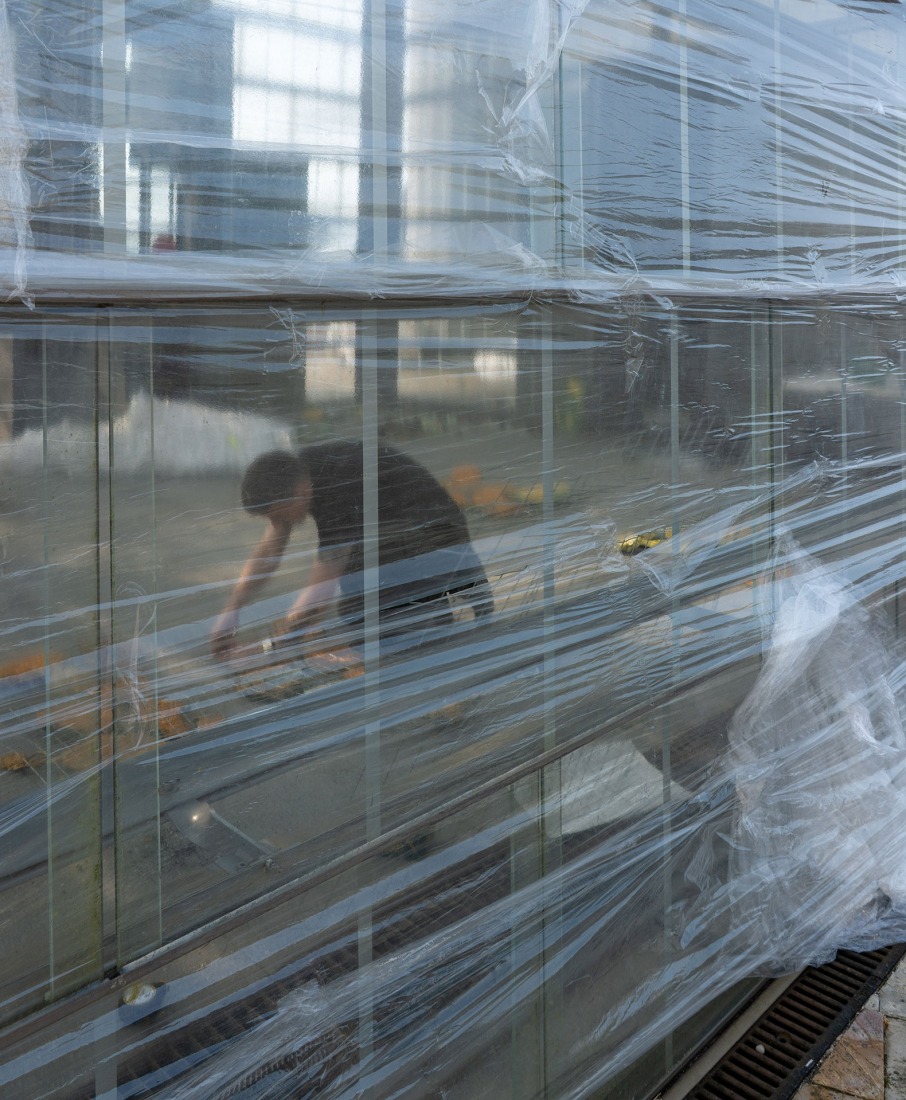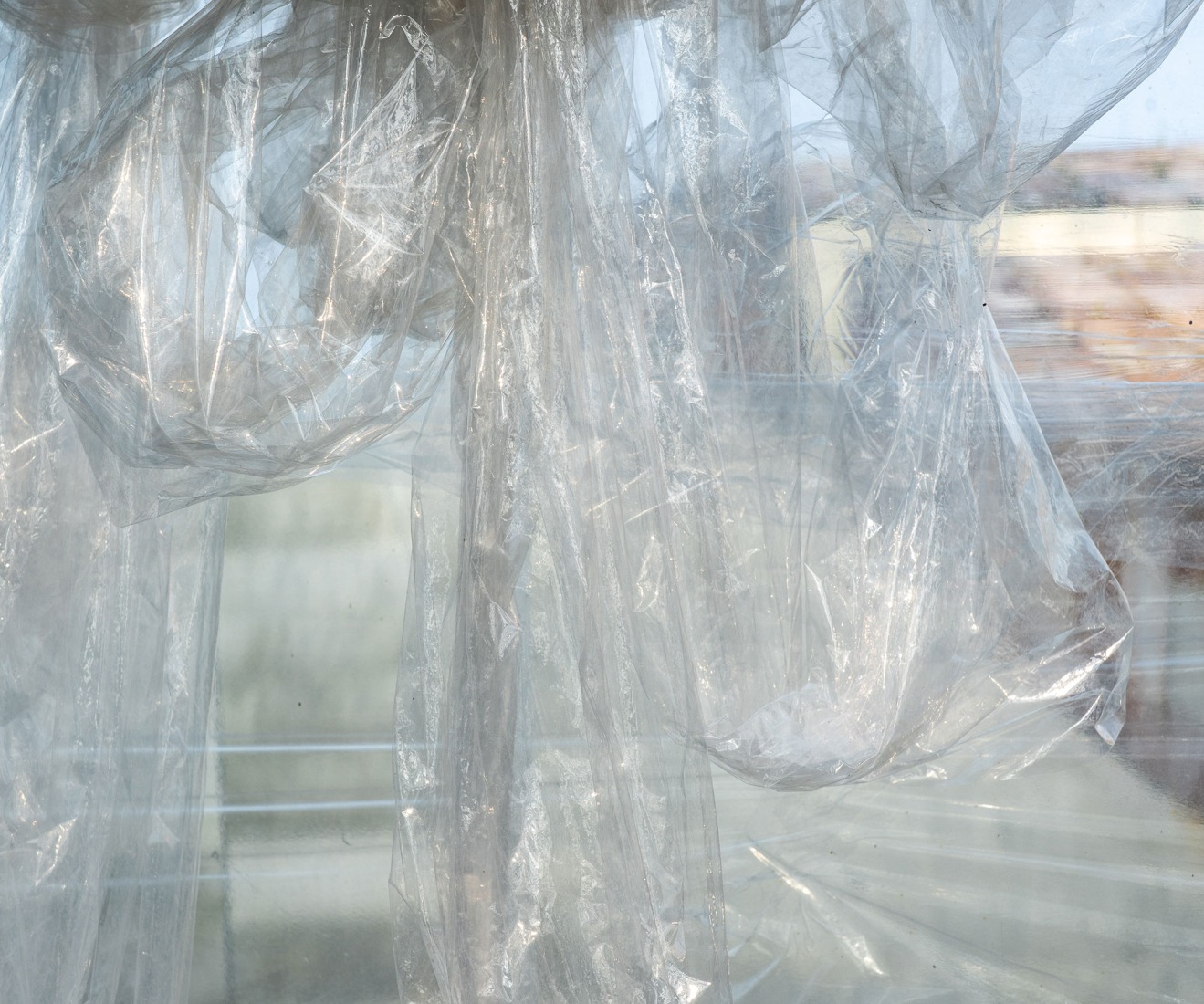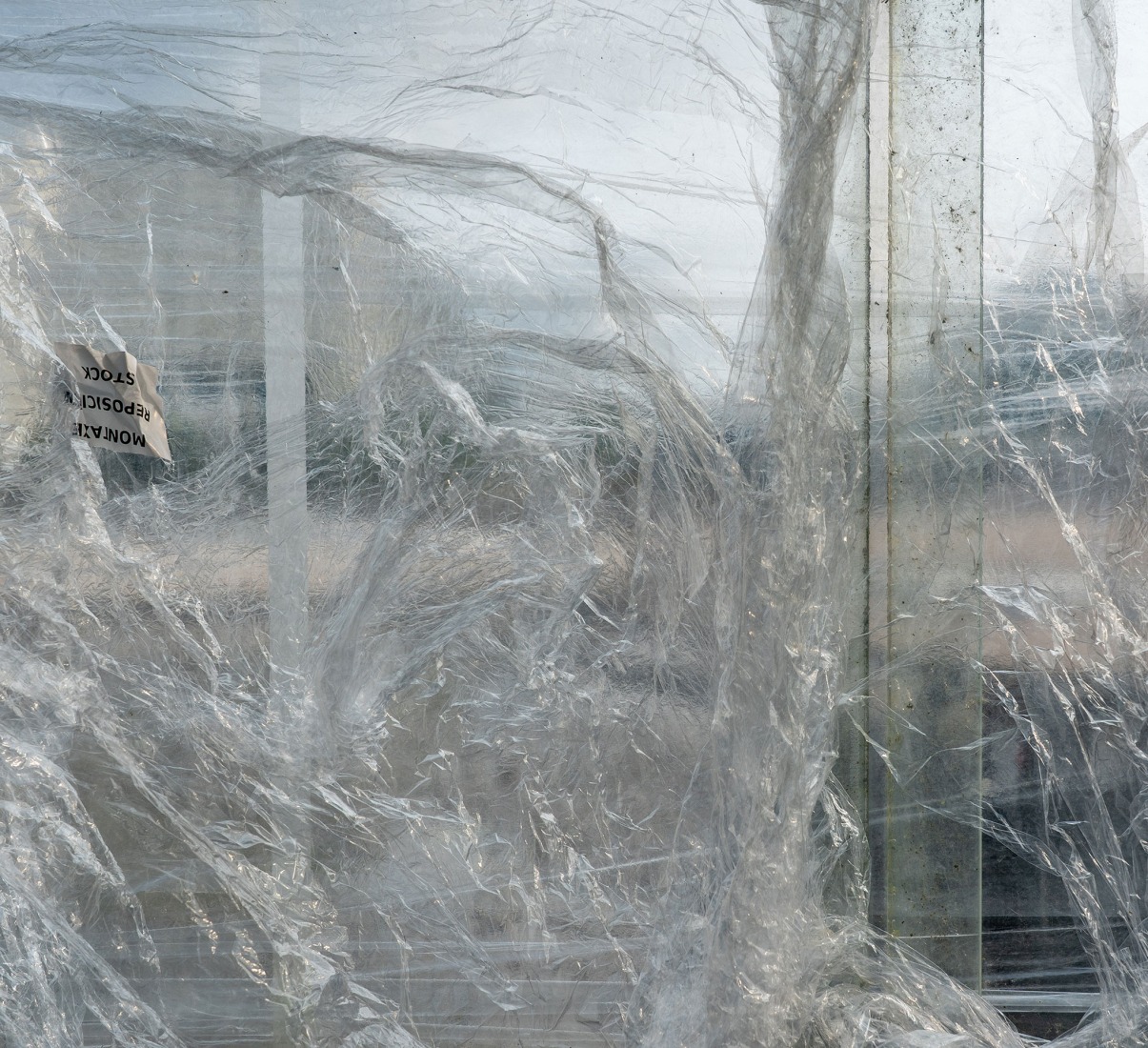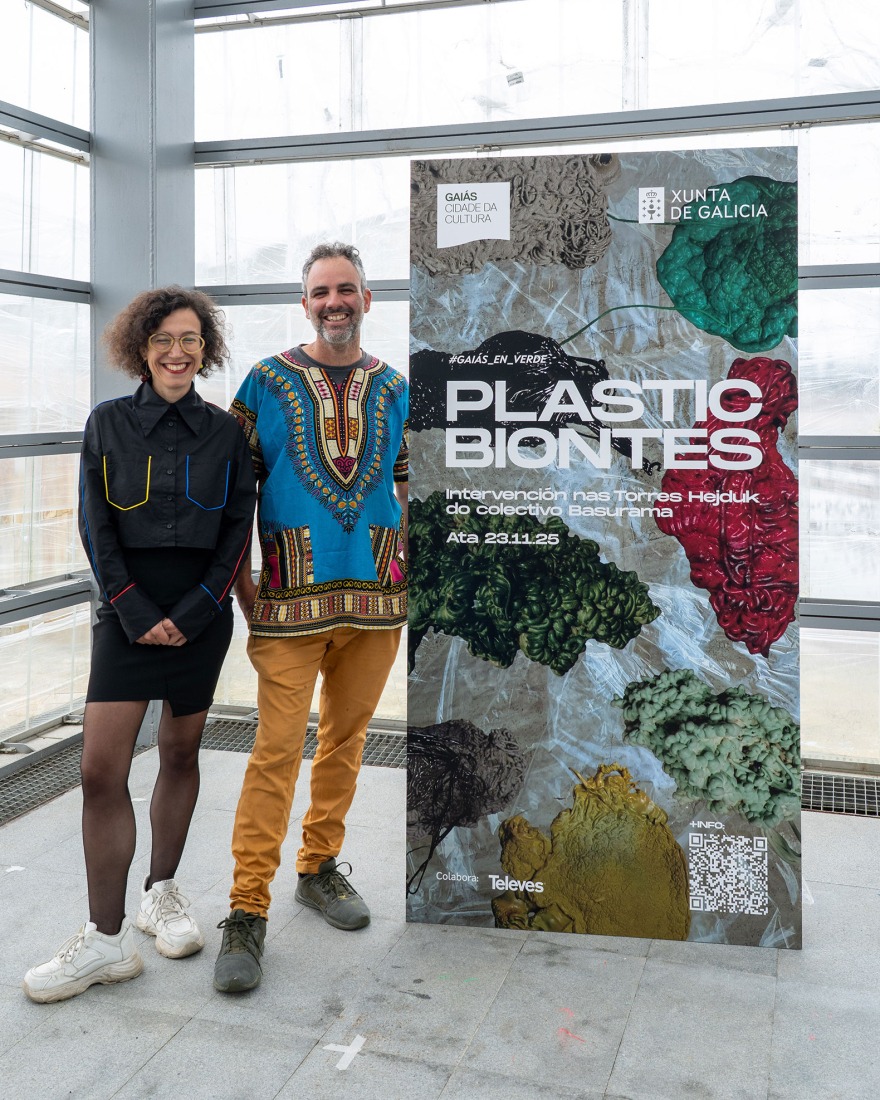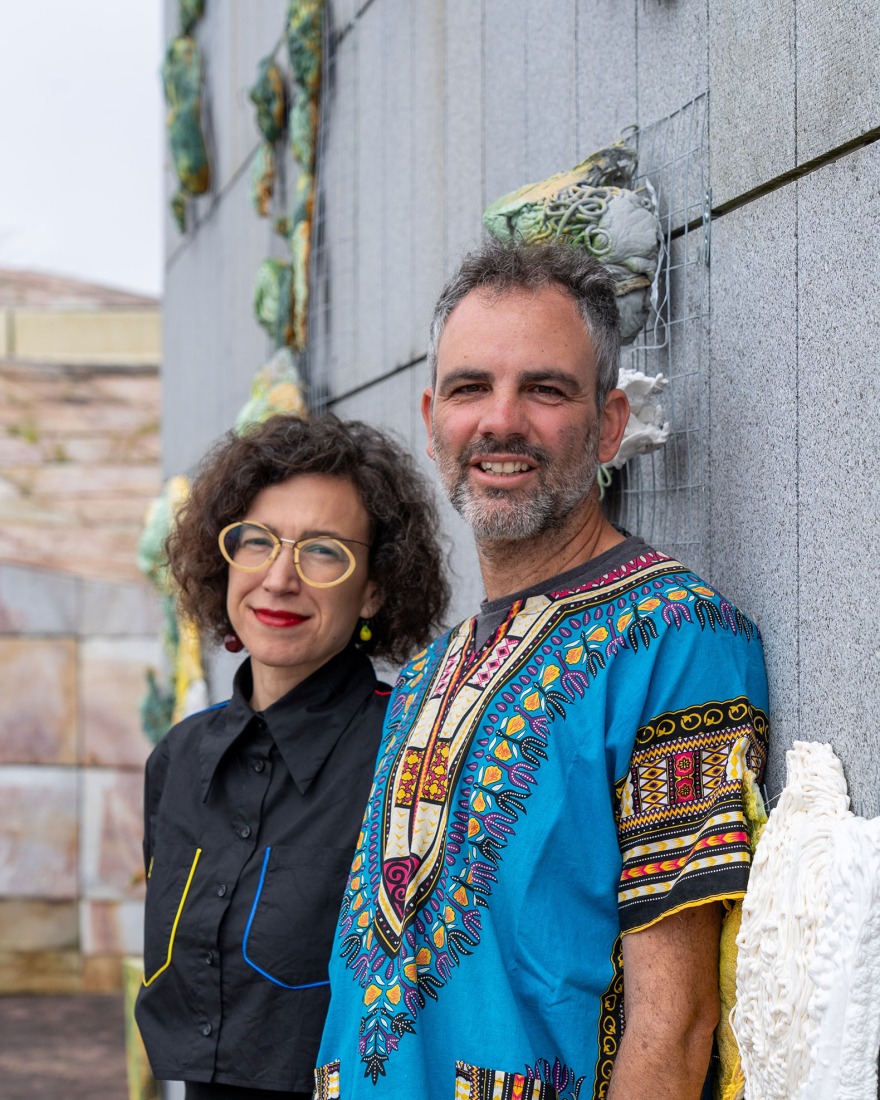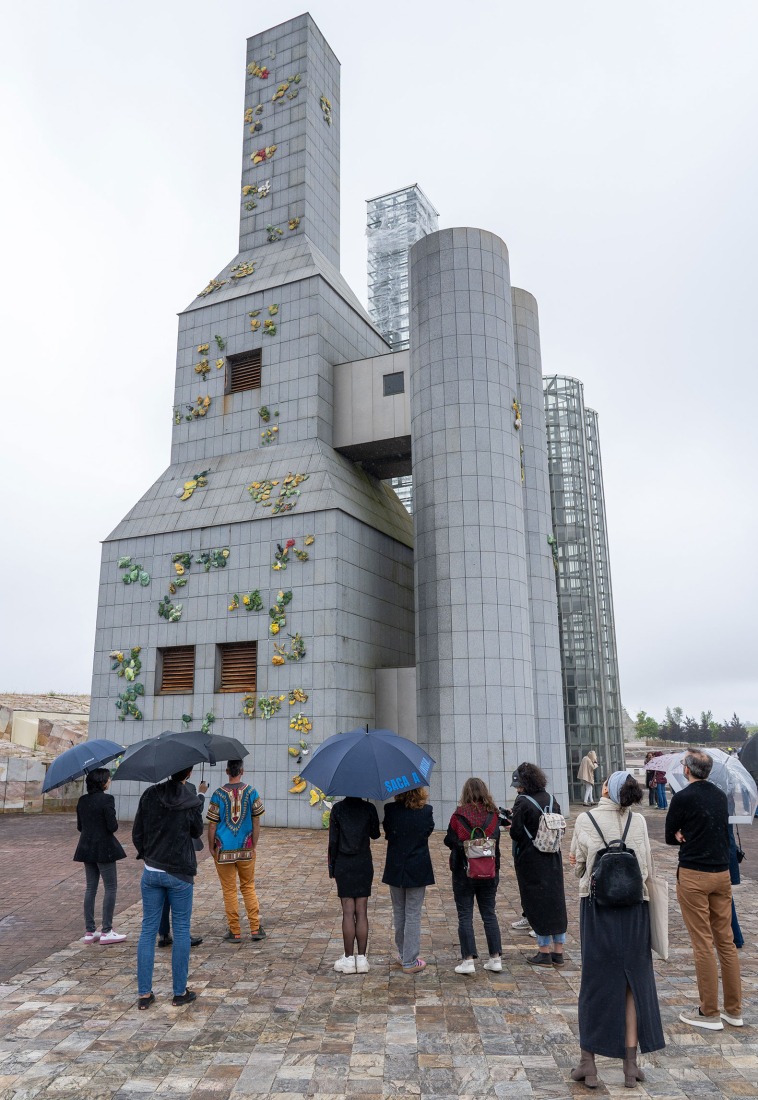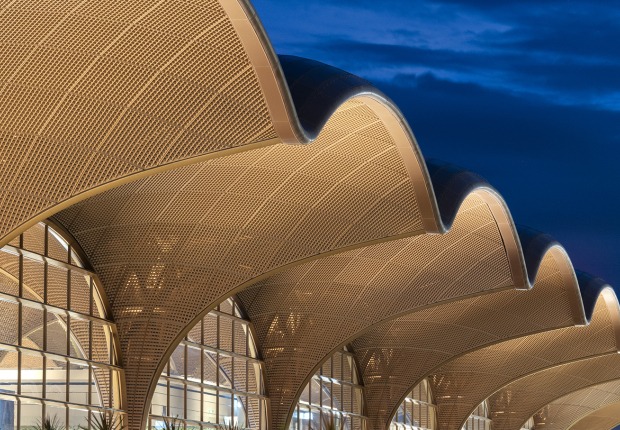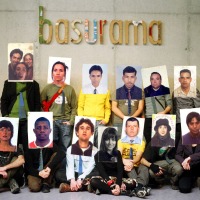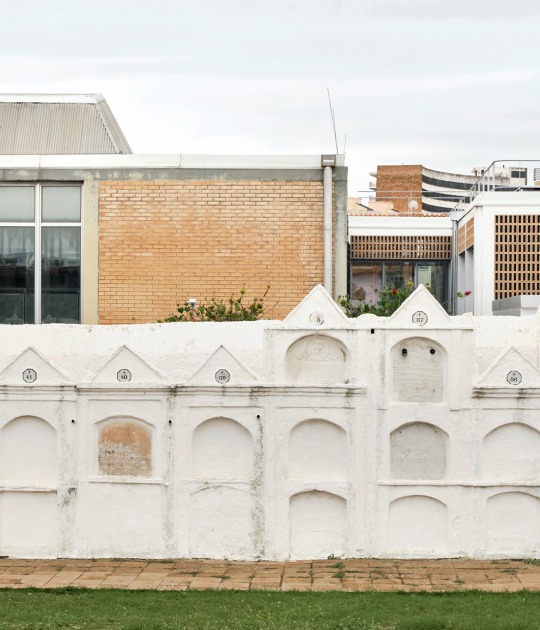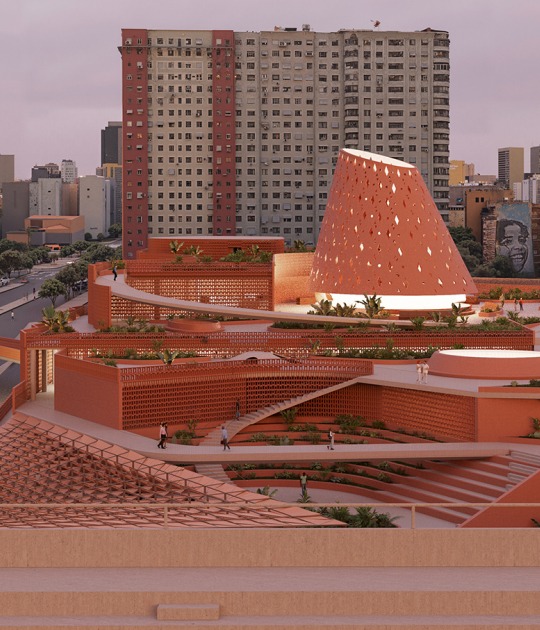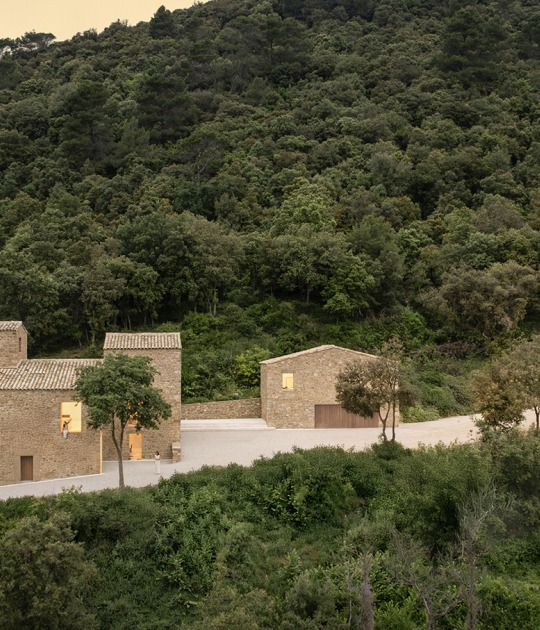In a visual metaphor for our contemporary contradictions, Basurama transforms the towers' skin, exploring the potential of plastic to generate textures and produce estrangement. Blurring the natural and artificial boundaries, the Hejduk Towers mimic living bodies, turning waste into a creative and critical tool.
The rough, shiny plastic covers the glass tower, generating a play of textures, sparkles, and reflections reminiscent of the overpackaging of objects and food. Curiously, the obsession with asepsis denotes a clear dichotomy: while plastic keeps the tower clean, it is also one of the main causes of microplastic pollution in our ecosystems.
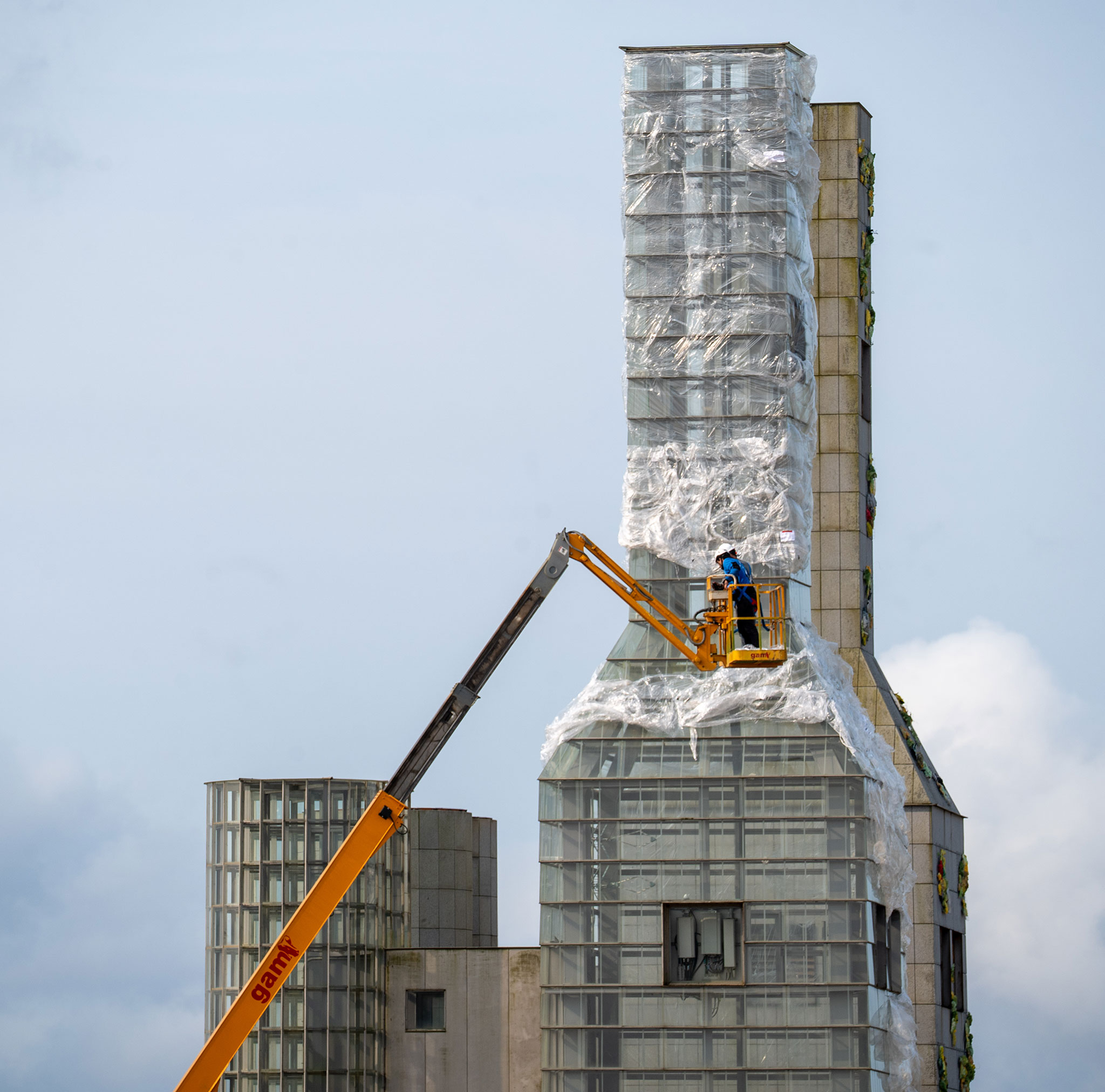
Work process. Intervention in the Hejduk Towers by Basurama collective. Photograph by Manuel G Vicente.
As an allegory of symbiosis, colourful plastic forms adorn the granite tower located next to the glass tower. Alluding to the lichens that colonise the city's walls, these "plastic lichens" intervene in the stone, altering and suturing it.
The proposal invites us to imagine future scenarios where adaptation, collaboration, and resilience prevail, overcoming the conception of plastic solely as waste.
An emblem of Gaiás: the legacy of John Hejduk embedded in the work of Peter Eisenman
Designed in 1992 by American architect John Hejduk (New York, 1929–2000), the Hejduk Towers were conceived to function as a sculpture-botanical garden and host educational activities in the Belvís park in Santiago de Compostela. The project never materialised, and after Hejduk's death, Peter Eisenman decided to revive the idea of his friend and colleague in The New York Five and proposed their construction, integrating them into the project for the Galician City of Culture.
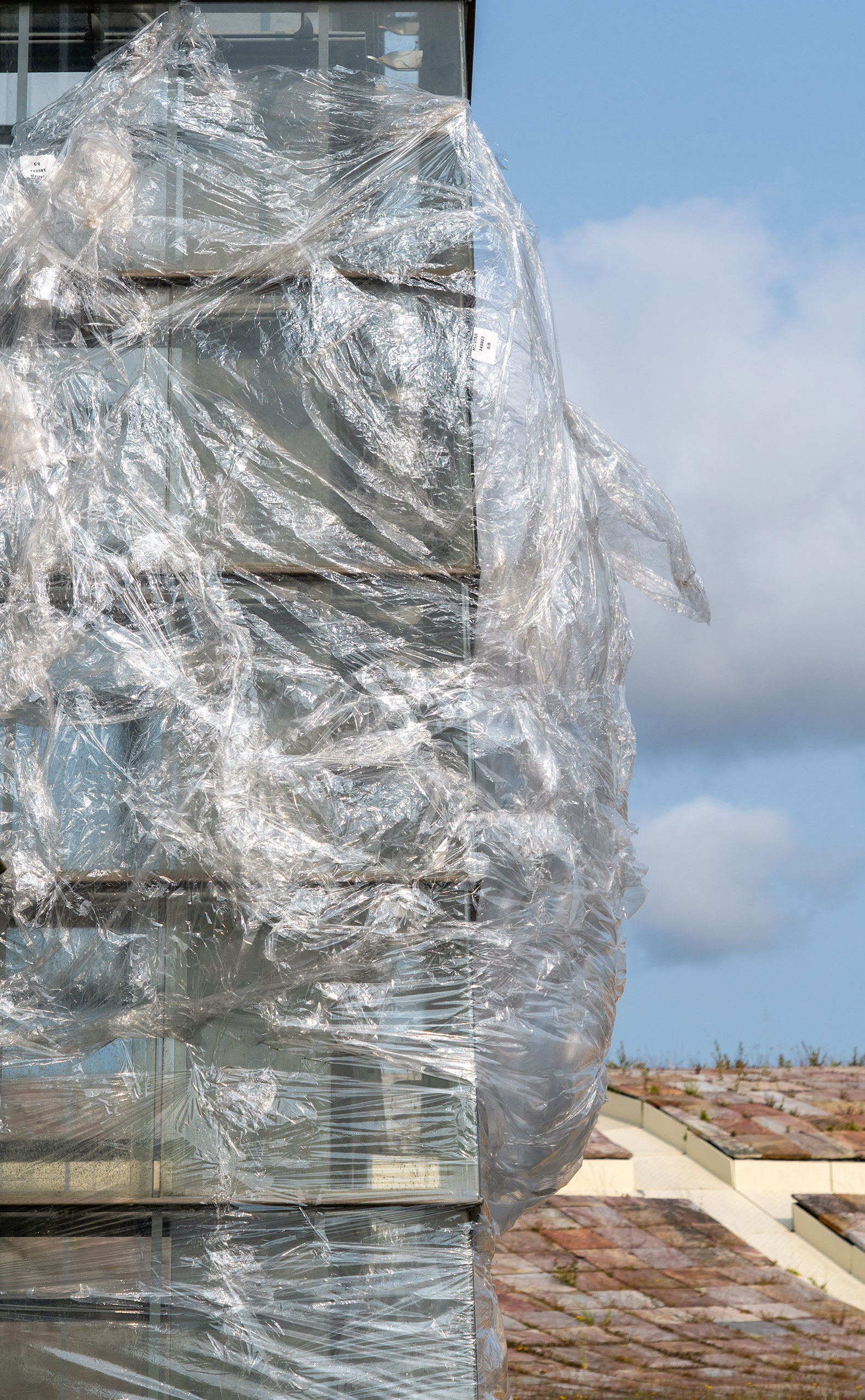
Work process. Intervention in the Hejduk Towers by Basurama collective. Photograph by Manuel G Vicente.
Located on the southwestern edge of the project, they were one of the first elements to be built on Mount Gaiás and soon became iconic symbols of the City of Culture, acting as beacons watching over the city's future. Linking the sacred past with contemporary utopia, their silhouettes stand out against the horizon like a schematic echo of the towers of Santiago Cathedral.
Having consolidated their vocation as an unconventional exhibition space, the Hejduk Towers have served as a platform for projects by contemporary artists such as Pamen Pereira, Ana Soler, Alejandra Sampedro, Félix Fernández, Sonia Navarro, and Irma Álvarez-Laviada, among others. At the same time, they have hosted artistic discourses linked to the environment, nature, and landscaping.
